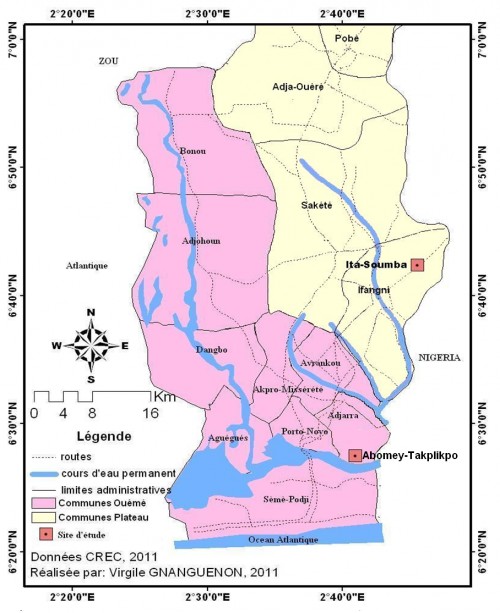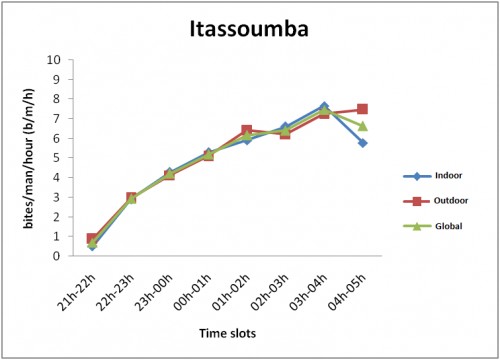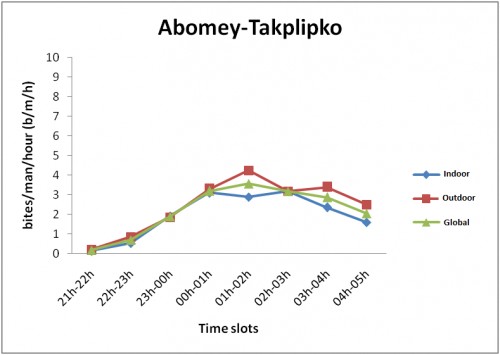P-ISSN: 2349-6800, E-ISSN: 2320-7078
Journal of Entomology and Zoology Studies
2019, Vol. 7, Issue 6
Biting behavior of multiparous female of Anopheles gambiae s. s. and transmission of Plasmodium falciparum in South-Eastern of Benin
Rodrigue Anagonou, Virgile Gnanguenon, Albert Salako, Bruno Akinro, Fiacre R Agossa, Marius Allossogbé, Idelphonse Ahogni, Moudachirou Ibikoulé, Arthur Sovi, Udoka Nwangwu, Renaud Govoetchan, Is-haquou HA Daouda, Ignace Togla, André Houtoukpè, Rock Aikpon, Razaki Ossè, Gil G Padonou and Martin Akogbéto
Background: The Plasmodium falciparum transmission occurs mainly at night. Anopheles mosquitoes that transmit P. falciparum are those that have taken blood feed and laid eggs several times. Unfortunately, the biting behavior of these mosquitoes is little known. This study aims to assess the impact of the biting behavior of multiparous vectors on malaria transmission.
Methods: Mosquitoes were collected by hour from 21. 00 hours to 05. 00 hours in two villages, Abomey-Takplikpo and Itassoumba, south-easten Benin. Anopheles gambiae s.l. was morphologically identified and dissected using the method of Polovodova and oil injection technique. The head-thoraces were assessed using enzyme-linked immunosorbent assay (ELISA CSP) and the others body parts were used for molecular identification by Polymerase Chain Reaction (PCR).
Results: Among the parous An. gambiae s.l. collected at Abomey-Takplikpo and Itassoumba, old An. gambiae s.l. that laid eggs several times bite more frequently in the second half of the night (p<0.05) than young An. gambiae s.l. that were more likely to bite earlier in the houses. On the 1008 and 868 head-thoraces of An. gambiae s.s. confirmed by PCR and analyzed by the ELISA-CSP respectively at Itassoumba and Abomey- Takplikpo, 2.98% (n = 30) and 2.53% (n = 22) were tested positive for the circumsporozoitic antigen of P. falciparum. Overnight, the infectivity distribution is homogeneous in both localities (P> 0.05). However, in the second half of the night, infectious mosquitoes were more frequent.
At Itassoumba and Abomey-Takplikpo, the biting behavior of multiparous females explains respectively 89.51% (R² = 0.8951) and 90.17% (R² = 0.9017) of the variability of mosquitoes’ infectivity.
Conclusion: Young Anopheles gambiae s.s. bite earlier in houses than old An. gambiae s.s. that bite more in the second half of the night. Infectious An. gambiae s.s. bite at any time of the night but more frequent after midnight. In addition, the biting behavior of multiparous An. gambiae s.s. was significantly associated with P. falciparum transmission.

Fig. 1: The villages of Itassoumba (district of Ifangni) and Abomey-Takplikpo (district of Adjarra) in south-eastern Benin

Fig. 2: Cycle of aggressiveness of females An. gambiae s.s. caught on man inside and outside of dwellings at Itassoumba

Fig. 3: Cycle of aggressiveness of females An. gambiae s.s. caught on man inside and outside of dwellings at Abomey-Takplikpo
Pages : 88-97 | 892 Views | 171 Downloads
How to cite this article:
Rodrigue Anagonou, Virgile Gnanguenon, Albert Salako, Bruno Akinro, Fiacre R Agossa, Marius Allossogbé, Idelphonse Ahogni, Moudachirou Ibikoulé, Arthur Sovi, Udoka Nwangwu, Renaud Govoetchan, Is-haquou HA Daouda, Ignace Togla, André Houtoukpè, Rock Aikpon, Razaki Ossè, Gil G Padonou, Martin Akogbéto. Biting behavior of multiparous female of Anopheles gambiae s. s. and transmission of Plasmodium falciparum in South-Eastern of Benin. J Entomol Zool Stud 2019;7(6):88-97.
Related Journal Subscription
Important Publications Links
Important Links










